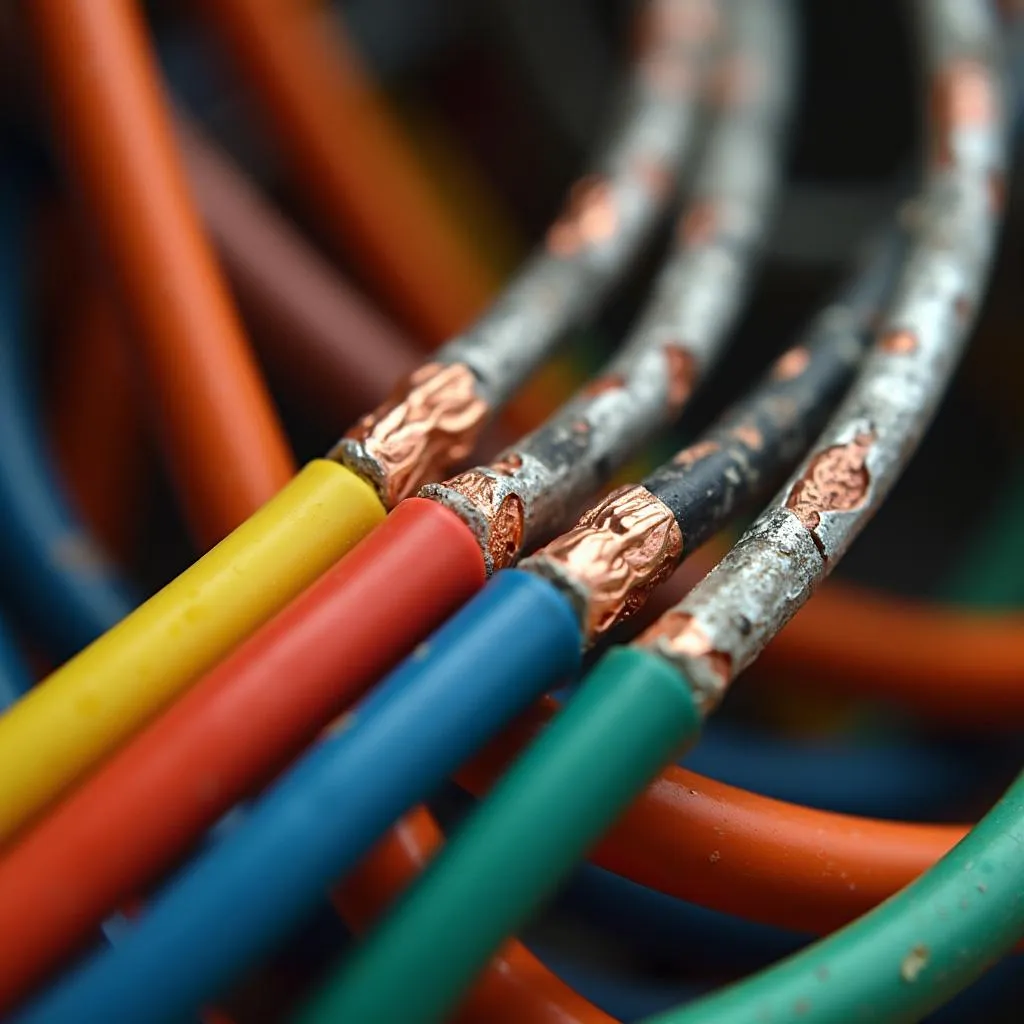The question “What color is 5?” might seem unusual at first. After all, we perceive numbers as abstract concepts, not visual entities like colors. However, the human mind is wired to seek connections and patterns, often linking seemingly unrelated ideas. This fascinating intersection of numbers and colors has captivated artists, scientists, and mystics for centuries.
Let’s delve into this intriguing world where numbers transcend their numerical values and take on vibrant hues.
Synesthesia: Where Numbers Have Colors
For some individuals, numbers and colors are intrinsically linked through a neurological phenomenon called synesthesia. Synesthetes experience a blending of senses, perceiving numbers, letters, or even sounds as specific colors.
Imagine seeing the number 5 and instantly experiencing a burst of emerald green or a rich sapphire blue. This is the reality for grapheme-color synesthetes, who have consistent color associations with specific numbers. While the exact cause of synesthesia remains a mystery, it offers a glimpse into the remarkable diversity of human perception.
Cultural Interpretations of Numbers and Colors
Across different cultures, numbers and colors hold symbolic meanings, often intertwined in mythology, religion, and everyday life. In ancient China, the number 5 was associated with the five elements – wood, fire, earth, metal, and water – each represented by a specific color.
 Five Elements in Chinese Culture
Five Elements in Chinese Culture
Similarly, in numerology, the number 5 is often linked to change and adventure, qualities that might be associated with vibrant, energetic colors like orange or yellow.
These cultural interpretations highlight the subjective nature of color perception and its deep connection to human beliefs and experiences.
Color-Coding Systems: Bringing Order to Chaos
Beyond individual perceptions and cultural symbolism, we use color-coded systems to organize information and enhance communication. Think of the colored wires in electrical circuits, where each color represents a specific function.
 Color-Coded Electrical Wires
Color-Coded Electrical Wires
While the number 5 itself might not have a universally assigned color in these systems, the principle of using colors to differentiate and categorize information is prevalent in various fields, from traffic lights to data visualization.
The Artistic Perspective: Numbers as Inspiration
Artists throughout history have explored the relationship between numbers and colors, often using mathematical principles to guide their creative process. From the geometric abstractions of Piet Mondrian to the vibrant color fields of Mark Rothko, artists have found inspiration in the harmony and balance inherent in numbers.
“Color is a power which directly influences the soul.” – Wassily Kandinsky
Abstract artist Wassily Kandinsky famously associated specific colors with individual numbers, believing in a spiritual connection between these elements. This artistic perspective reminds us that color perception is deeply personal and can evoke a wide range of emotions and associations.
Finding Your Own “Color of 5”
Ultimately, the “color of 5” is a subjective experience, influenced by individual perceptions, cultural background, and personal associations. There’s no right or wrong answer, just as there’s no single way to experience the world around us.
- Embrace your unique perspective: If you see the number 5 as a vibrant shade of turquoise or a soothing lavender, that’s your personal truth.
- Explore different color systems: Delve into the world of color theory, cultural symbolism, and synesthesia to expand your understanding of how colors and numbers intertwine.
- Experiment with color in your own life: Whether it’s painting your walls, choosing your clothes, or simply paying attention to the colors that surround you, allow color to enhance your daily experiences.
While the question “What color is 5?” might not have a definitive answer, it sparks a fascinating journey into the world of perception, symbolism, and the boundless possibilities of human creativity.
FAQ
1. What is synesthesia?
Synesthesia is a neurological condition where stimulation of one sense triggers experiences in another sense. For example, a person with grapheme-color synesthesia might see specific colors when they look at numbers or letters.
2. Does everyone see colors when they think of numbers?
No, not everyone experiences synesthesia. For most people, numbers are abstract concepts without specific color associations.
3. Are there any practical applications of color-coding systems?
Yes, color-coding is used extensively in various fields, including electrical engineering, transportation, and data visualization, to improve clarity and communication.
4. How can I learn more about the relationship between colors and numbers?
You can explore resources on color theory, synesthesia, and cultural symbolism. Additionally, exploring art movements that focus on color and abstraction can provide valuable insights.
Still Curious About Colors?
Explore the fascinating world of colors further with these related articles:
- What color is clonazepam 5 mg?
- What color is sertraline 50 mg?
- What color is a 15 amp fuse?
- What color would litmus paper red turn in dishwashing liquid?
- A color that starts with o
Need expert advice on choosing the perfect colors for your space?
Contact us at 0373298888 or email us at [email protected]. Visit our showroom at 86 Cầu Giấy, Hà Nội, where our team of color specialists is available 24/7 to assist you. Let Color Box Hanoi help you transform your vision into a vibrant reality.

